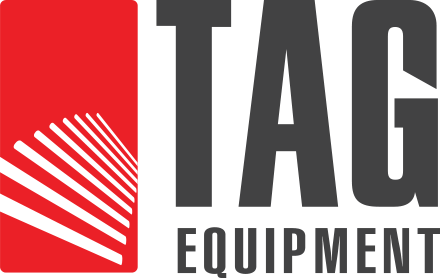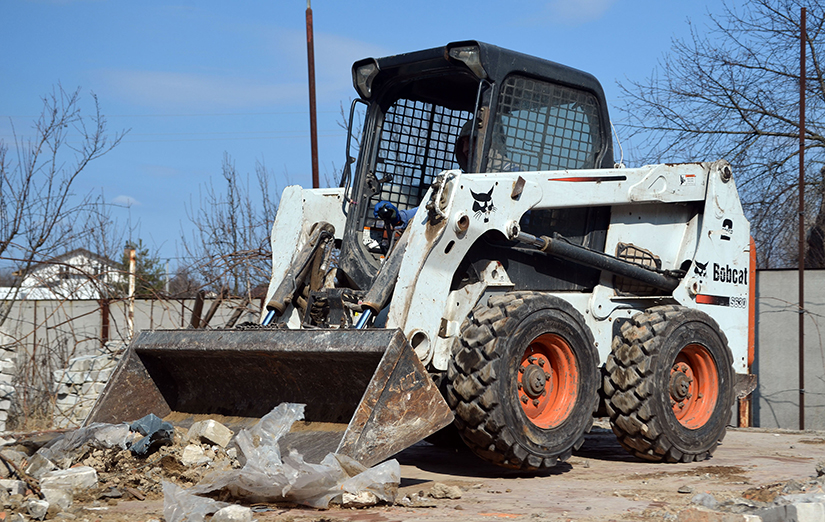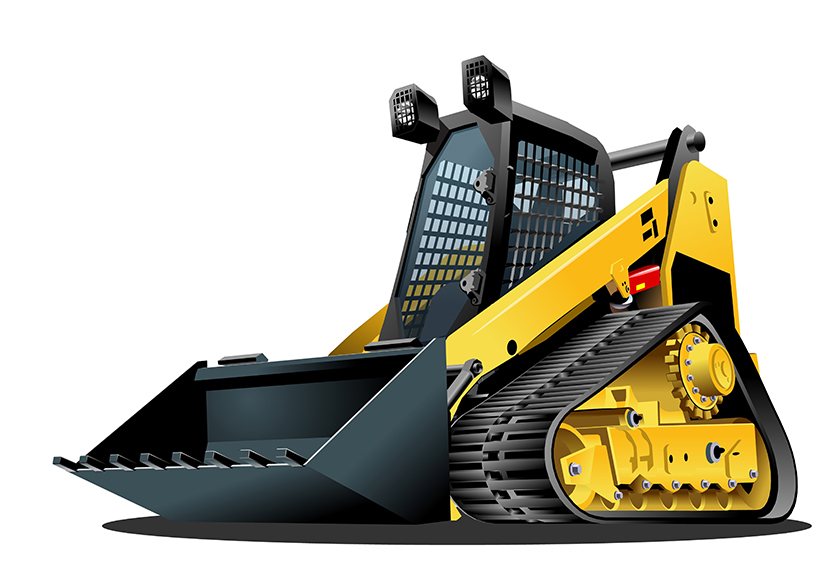Welcome to the ultimate guide on skid steer attachments, expertly crafted to help you maximize the functionality and efficiency of your skid steer loader. At Tag Equipment, we pride ourselves on providing top-quality attachments that enhance the versatility and performance of your compact equipment across various industries, including construction, agriculture, and landscaping. Understanding the right attachments for your skid steer can transform your operations, increase productivity, and ensure you achieve outstanding results with every project.
Understanding Skid Steer Attachments
Skid steer attachments are specialized tools designed to be mounted onto a skid steer loader—a highly flexible and powerful machine used extensively for a wide range of tasks. These attachments make it possible for one machine to perform the jobs of many, from earthmoving and grading to loading and handling materials.
The Role of Attachments
By equipping a skid steer with various attachments, the machine can be customized to perform specialized tasks efficiently, thus reducing labor and operational costs. Attachments such as brooms, buckets, and pallet forks allow skid steers to adapt quickly to different job requirements, making these machines indispensable on job sites.
Types of Skid Steer Attachments
Skid Steer Brooms
Pick-up Brooms: Ideal for intensive cleaning tasks, they include a bin for collecting debris, making disposal easy and efficient. They’re particularly useful in environments like construction sites and urban areas where debris collection is a priority.
Sweeper Brooms: Best for light, quick surface cleaning. They sweep debris to the side and are perfect for maintaining parking lots, roads, and other paved surfaces.
Benefits
Both types of brooms help maintain clean, safe, and professional-looking work environments. They reduce the time and effort required for manual cleanup and enhance the operational efficiency of work sites.
Skid Steer Buckets
General Purpose Buckets: These are versatile and essential for most digging and loading operations. They work well with materials like soil, sand, and gravel.
High Capacity Buckets: Designed to handle larger volumes of materials such as mulch, grain, or snow. These buckets are perfect for agricultural settings or snow removal tasks.
Skeleton Buckets: These are used for sorting out unwanted materials from soil or for demolition. They are excellent for clearing rocks and debris from soil, aiding in site preparation and landscaping.
Benefits
Skid steer buckets are critical for efficient material handling and site preparation, offering flexibility and robustness in operations. They reduce manpower needs and enhance job site efficiency.
Skid Steer Pallet Forks
Importance and Versatility
Pallet forks are vital for logistics and material handling, allowing skid steers to transport and stack materials efficiently. They are widely used in warehouses, farms, and construction sites for moving heavy items quickly.
Benefits
They provide immense utility in transporting and organizing materials, significantly enhancing logistical operations and reducing physical strain on workers.
Skid Steer Augers
Types and Applications
Auger Drives: These provide the power necessary for drilling operations, suitable for different soil types and conditions.
Auger Bits and Extensions: Available in various sizes and designs to handle specific tasks such as planting, pole setting, or foundation drilling.
Benefits
Augers are essential for precision drilling tasks, significantly reducing the time and labor involved in creating holes for posts, trees, or foundation elements.
Skid Steer Snow Blades and Snow Pushers
Features and Winter Applications
Snow Blades: Adjustable and can be set to various angles to direct snow effectively off paths and driveways.
Snow Pushers: Designed to move large volumes of snow, ideal for clearing large open spaces such as parking lots and access roads.
Benefits
These attachments are critical for maintaining accessibility and safety in snowy conditions, enabling efficient snow management and removal.
Choosing the Right Attachment for Your Skid Steer
Selecting the right attachment is crucial for maximizing the performance and efficiency of your skid steer. Consider the specific requirements of your projects, the material types you will handle, and the environmental conditions of your work area. Always ensure that the attachment is compatible with your skid steer’s capacity and hydraulic system to avoid overloading or damage.
Maintaining Your Skid Steer Attachments
Regular maintenance is essential to keep your skid steer attachments in optimal condition. This includes routine inspections for wear and damage, proper cleaning after use, and storing attachments in a dry, protected space to prevent rust and corrosion. Proper maintenance not only extends the lifespan of your attachments but also ensures they operate at peak efficiency.
Skid Steer Attachments FAQ
1. What are skid steer attachments, and why are they important?
Skid steer attachments are specialized tools that connect to skid steer loaders, transforming them into versatile machines capable of performing a variety of tasks. These attachments are critical because they expand the functionality of the skid steer, allowing it to perform jobs ranging from earthmoving and landscaping to snow removal and material handling. By using different attachments, operators can customize their equipment for specific tasks, enhancing productivity and reducing operational costs.
2. How do I choose the right skid steer attachment for my project?
Choosing the right attachment involves assessing your specific project needs, the material types you’ll be handling, and the environmental conditions of your work area. Consider the following steps:
– Identify the Task: Determine what job you need the attachment for, whether it’s digging, lifting, cleaning, or another task.
– Evaluate Skid Steer Capability: Ensure the attachment is compatible with your skid steer’s operating capacity, hydraulic flow, and weight balance.
– Consult Experts: Speak with professionals like those at Tag Equipment for personalized advice based on your specific requirements and equipment model.
3. Are skid steer attachments interchangeable among different brands?
Many skid steer attachments come with a universal mounting system, which allows them to be used with various brands of skid steers. However, it’s important to check the specific compatibility with your machine’s model and brand. Some attachments may require adapters, or there may be hydraulic considerations that limit compatibility.
4. What maintenance is required for skid steer attachments?
Proper maintenance is crucial to extending the lifespan and ensuring the efficiency of skid steer attachments. Routine maintenance should include:
– Regular Inspections: Check for signs of wear, damage, or hydraulic leaks.
– Cleaning: Clean attachments after each use to prevent build-up of materials that could cause damage or inefficiency.
– Lubrication: Regularly lubricate moving parts to ensure smooth operation.
– Storage: Store attachments in a dry, protected space to avoid rust and corrosion.
5. How can skid steer attachments impact operational efficiency on a work site?
Skid steer attachments can significantly boost operational efficiency by allowing a single machine to perform multiple functions. This reduces the need for multiple pieces of equipment on a job site, which can lower operational costs and speed up project completion. Attachments like buckets, pallet forks, and augers can also reduce the manpower needed for tasks like digging, material handling, and drilling.
6. What are some safety tips for using skid steer attachments?
Safety is paramount when operating skid steer attachments. Here are some key tips:
– Proper Training: Operators should be properly trained on each attachment’s operation and understand the skid steer’s capabilities.
– Check Attachments Before Use: Inspect attachments for any damage or wear before use to ensure they are safe to operate.
-Follow Manufacturer Instructions: Always adhere to the manufacturer’s guidelines for operating and maintaining attachments.
– Use Safety Gear: Operators should wear appropriate safety gear, including helmets, gloves, and protective eyewear.
7. Can skid steer attachments be custom-made for specific needs?
Yes, custom skid steer attachments can be designed and manufactured to meet specific operational needs. Custom attachments are particularly useful for unique or specialized tasks that standard attachments cannot accommodate. Consulting with a manufacturer like Tag Equipment can help you determine if a custom solution is needed for your specific situation.
8. What is the impact of hydraulic flow on the performance of skid steer attachments?
Hydraulic flow significantly affects the performance of skid steer attachments. Attachments that require a high hydraulic flow rate may not perform optimally with skid steers that have a lower flow capacity. It’s essential to match the hydraulic requirements of the attachment with the capabilities of the skid steer to ensure efficient and effective operation.
9. How often should skid steer attachments be replaced?
The lifespan of skid steer attachments varies depending on their usage, material quality, and maintenance. Regular inspections can help determine when an attachment should be repaired or replaced. Generally, if an attachment starts showing excessive wear, decreased performance, or frequent breakdowns, it may be time to consider replacement.
10. How can I maximize the lifespan of my skid steer attachments?
Maximizing the lifespan of skid steer attachments involves proper maintenance, correct usage, and immediate addressing of any issues:
– Use as Intended: Avoid using attachments for jobs they weren’t designed for.
– Follow Maintenance Schedules: Adhere to recommended maintenance procedures.
– Address Repairs Promptly: Repair any damage or wear immediately to prevent further issues.
By understanding these aspects of skid steer attachments, operators can ensure they choose the right tools for their tasks, maintain them appropriately, and operate them safely and efficiently, thereby maximizing both productivity and the lifespan of their equipment.
Diversity of skid steer attachments
The diversity of skid steer attachments—from brooms to buckets, pallet forks to augers, and snow blades to snow pushers—illustrates the broad spectrum of functionalities that can be unlocked with the right tools. Each attachment type has been designed to address specific operational needs, ensuring that no matter the task at hand, there is an efficient and effective solution available. Whether it’s maintaining clean, safe work environments with brooms, handling large volumes of materials with buckets, or managing winter conditions with snow blades, the right attachment not only enhances the skid steer’s capability but also transforms it into a powerhouse of productivity.
Choosing the right attachment
Choosing the right attachment is about understanding the specific demands of your work environment, the material you will be handling, and ensuring compatibility with your skid steer’s specifications. This decision-making process is crucial because the right attachment not only enhances performance but also prevents potential overloading or damage to your equipment. As such, meticulous consideration of your projects’ requirements, consultation with experts, and possibly even on-site demonstrations of various attachments can be invaluable.
Maintaining Attachments
Maintaining these attachments is equally vital. Regular maintenance schedules, thorough inspections, and proper storage practices extend the lifespan of the attachments and ensure they perform optimally at all times. Ignoring these aspects can lead to decreased efficiency, higher operational costs, and potentially unsafe working conditions. Therefore, adopting a proactive approach to maintenance—prioritizing routine checks, immediate repairs, and adherence to storage guidelines—can save both time and resources in the long run.
Moreover, the role of skid steer attachments in reducing labor and operational costs cannot be overstated. By enabling a single machine to perform multiple functions, these attachments reduce the need for multiple pieces of equipment on a job site, thereby not only cutting down on expenditure but also minimizing environmental impact. This multifunctionality, coupled with the ease of attachment interchangeability, underscores the skid steer’s status as an indispensable tool in industries ranging from construction to agriculture, and beyond.
Conclusion
The effective use of skid steer attachments represents a significant investment in your operational capabilities. It’s an investment in efficiency, productivity, and versatility that pays dividends across the lifespan of your projects. At Tag Equipment, we are here to guide you through selecting, using, and maintaining the best attachments for your needs. Remember, the right attachments are not just additions to your skid steer—they are essential components that transform your equipment into a dynamic solution capable of tackling various challenges with unparalleled efficiency. So, consult with our experts, leverage our extensive range of quality attachments, and equip yourself to meet the demands of any job with confidence and expertise.


